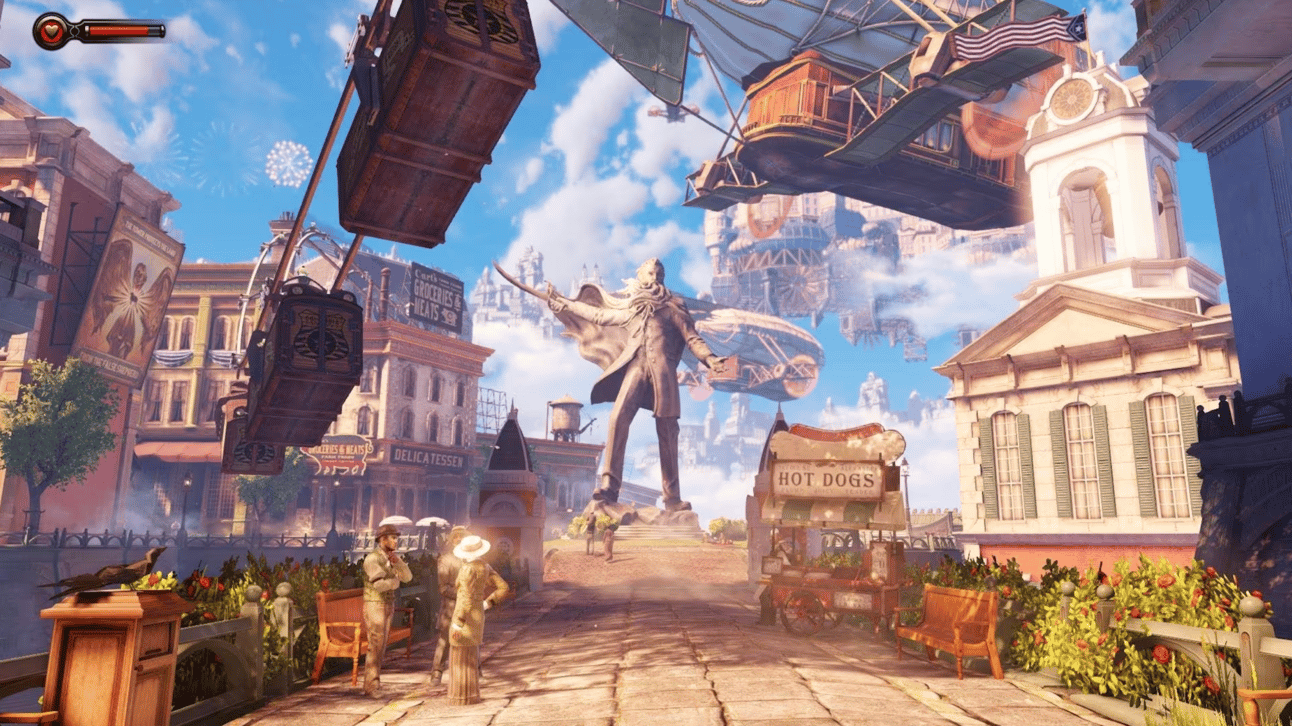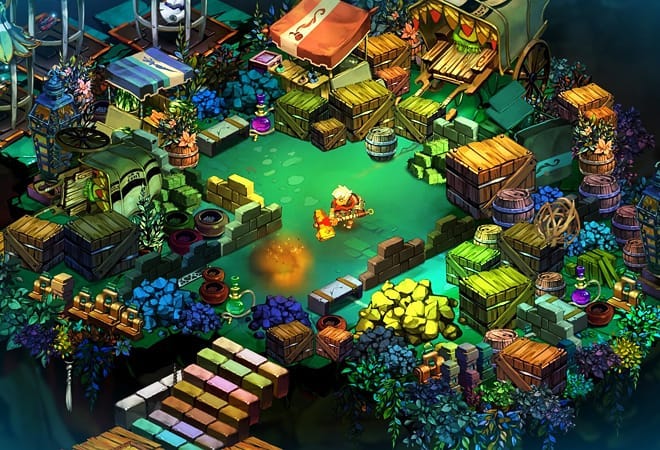3 Proven Strategies to Gamify Your Storytelling
Master the Art of Ownership, Leveling, and Immersive Settings

The best world builders are video game designers, and writers of all kinds should sit at their feet to learn the art of crafting compelling stories.
Here’s something wild: the video game industry pulls in $347 billion (with a “b”) every year. That’s more than Hollywood and the music industry combined.
Video games have shaped entire generations, influencing everyone from fans of Super Mario and Pikachu to players of Call of Duty and Fortnite. These games not only molded our childhoods but also offer powerful storytelling strategies.
The first game I fell in love with was Banjo-Kazooie, released by Nintendo in 1998 for the Nintendo 64. The premise was simple: control Banjo, an easy-going brown honey bear, and Kazooie, a troublemaking red-crested Breegull, as they try to save Banjo's sister Tooty from the wicked witch Gruntilda.

What I loved most was the exploration—nine nonlinear worlds filled with items to gather, puzzles to solve, and enemies to battle, all leading to a climactic boss fight. It embodied everything that made '90s gaming so good.
Games like Zelda and Skyrim follow a similar arc: the player is the protagonist, leveling up, collecting tools, and making decisions that impact the outcome.
The power of choice is key—the player's decisions shape how the story ends.
Although we haven't fully bridged this level of interactivity in traditional storytelling (setting aside the often-frustrating "choose your own adventure" books), there’s a lot writers can learn from the way games tell stories.
I recommend three strategies to gamify your storytelling:
Answering and Owning the Call
Growth and Achievement
Setting as a Character
Let’s go 🤙
1) Answering and Owning the Call
In many video games, players are dropped into a world where they are given missions that feel grand and meaningful.
The Legend of Zelda begins with Link receiving a classic "call to adventure," where he must save the land of Hyrule from impending doom—similarly, games like Halo and Final Fantasy place players in pivotal roles with significant responsibilities.
This initial call is not just a plot device—it gives players a sense of purpose and ownership over the story.
A clear purpose or mission is equally important in storytelling.
Whether in fiction, memoir, or non-fiction, this "call" propels the story forward and engages readers or audiences by giving them something larger than themselves to invest in.
When done effectively, video games and written stories create a powerful sense of ownership. Not only do the characters become deeply connected to their missions, but readers and players are equally invested in the story's direction.
For Fantasy/Sci-fi: Create a larger-than-life quest like Link in Zelda. The character’s destiny is tied to a world-changing event, and their decision to own their call should impact the fate of others.
For Nonfiction/Memoir: When writing about personal development or overcoming hardship, identify the moment (the 5-second moment) when the subject "answers the call" in their life and shows how they take ownership of their journey.
For Speeches: This is the turning point where the speaker identifies a larger mission and invites the audience to join in. Think of Martin Luther King Jr.’s "I Have a Dream" speech, where he outlines a vision for justice and equality, calling others to take ownership of this dream.
2) Growth & Achievement
Nathan Baugh, who runs the viral World Builders newsletter, calls this the “Rate of Progress” metric. This is how quickly your story progresses readers from one scene to the next.
There are a dozen ways this is seen in video games.
Levels — In Call of Duty, players progress through distinct missions in a campaign, each more difficult than the last.
Collectibles—In Assassin's Creed, players collect artifacts, weapons, and historical items that deepen their understanding of the game’s lore and world.
Experience Points—In Fortnite, players earn XP for completing challenges, surviving rounds, and eliminating opponents.
Time-Based Progress — In Animal Crossing, time passes in real time, affecting in-game events like seasons, holidays, and character interactions.
Resource Management—In The Sims, players manage Sims' needs (hunger, energy, social, etc.) and resources (money, items), balancing their day-to-day survival with the game's progress.
You are just one more round, one more hour, one more day away from making progress. It’s addicting; game designers know it, and storytellers should, too.
We are drawn to progression in our stories.
In The Hunger Games, Collins uses a detailed count of the remaining tributes to show progress in the arena. As the 24 tributes dwindles, the tension heightens for Katniss and readers!
In Harry Potter and the Goblet of Fire, Rowling uses the Triwizard Tournament’s three tasks as clear markers of progress. Each task is described in detail, and Harry’s performance in each task is measured against the other champions.
Begin thinking of your story, sermon, X Thread, or comic book as a linear line with a strong Start and a satisfying End.
| Progress | is everything in the middle. Don’t get lazy in the middle.
Give your audience a payoff many times in your book, not just at the end.
3) Setting as a Character
This is the often-forgotten stepchild of storytelling, and video game designers don’t have the luxury of forgetting it.
Video games have never been afraid to lean hard into sci-fi, fantasy, westerns, apocalypse stories, and so on. This means we get many games with unique characters, mechanics, lore, and personality.
In video games, the world is not a backdrop to the action; it takes a front-row seat to the story.
Just look at these settings:
Red Dead Redemption

Red Dead Redemption 2, 2018
BioShock Infinite

BioShock Infinite, 2013
Bastion

Bastion, 2011
The key to creating a great setting is they change, alter, and shape the story themselves. This is why we are attracted to Hogwarts, Narnia, Gotham City, and Middle Earth.
The story depends on the setting just as much as the setting depends on the story.
Here are three questions to ask about your setting:
What makes my setting interesting?
How does the setting change my story?
What makes my setting different than all others?
Whatever your answers, those are the aspects of your setting to highlight.
Video games can teach us so much about the art of storytelling. With an annual revenue of $357 billion, we should be listening.
We covered three strategies to gamify your storytelling,
Answering and Owning the Call
Growth and Achievement
Setting as a Character
Start small and implement one of these in your writing this week.
This Week’s Christian Creator Highlight!
No stories were submitted, so I’ll pick someone to highlight. Here is the “Biblically Accurate Unicorn” by @MrRyanDrew.
Post a screenshot from a video game on X. In the caption, write an opening scene inspired by that image. Imagine the world, the characters, and the story behind it.
Writing Prompt
As always, feel free to submit your stories, illustrations, or videos by replying to this email or tagging me on X (@thepaytonminz). Let me know if you’d prefer to remain anonymous.
Write on 🤙
Payton



